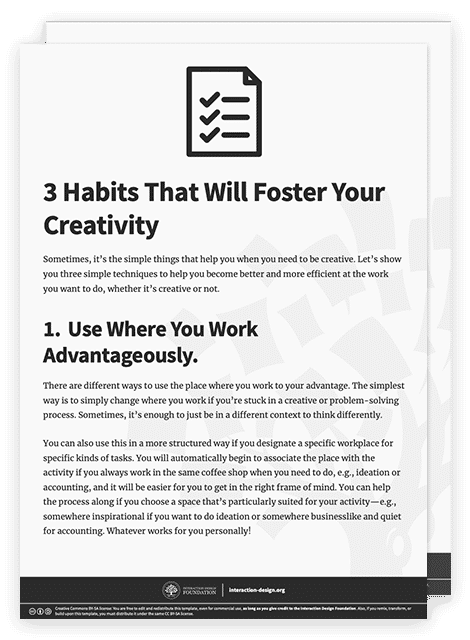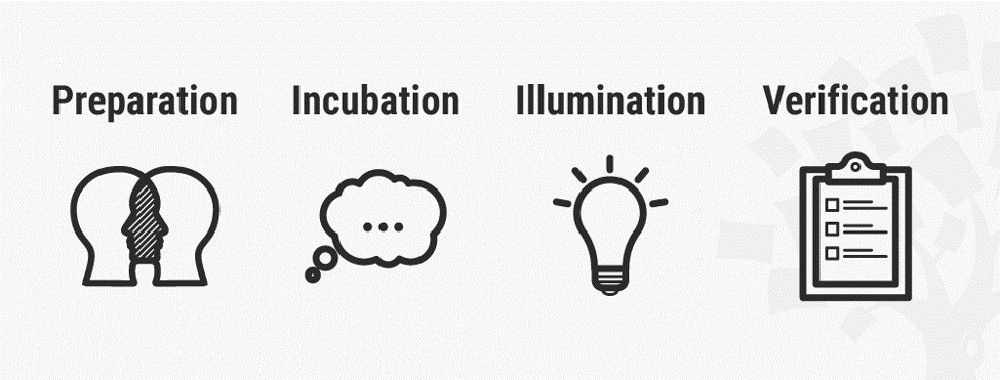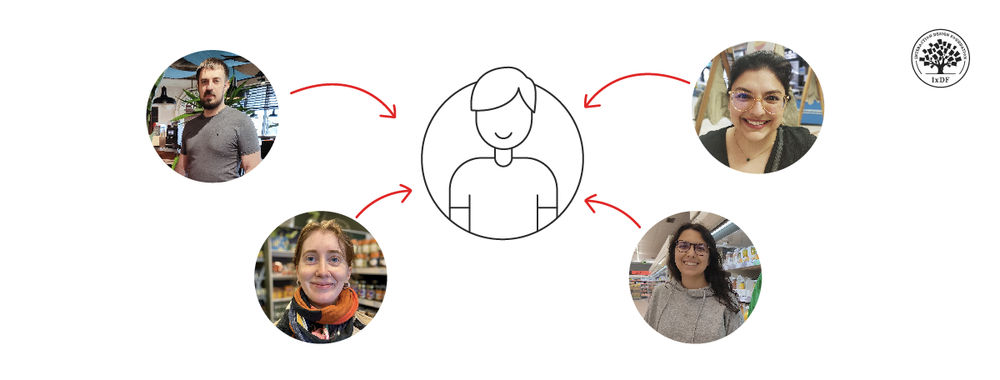Let’s explore the various stages of creativity so you can get a firmer idea of its true nature as such a powerful human resource. Graham Wallas was the first to create an overview of a creative process back in 1926. As you can imagine, lots of iterations have emerged since then. Some of these theories describe a creative process of 4, 5 or 6 stages. But essentially, nothing has changed. Solid insights and knowledge do last for a long time.
In the book The Art of Thought from 1926, Graham Wallas proposed one of the first complete models of the creative process. Wallas described how it consists of the four-stage process of preparation (or saturation), incubation, illumination and verification (or implementation). This 1920s’ theory continues to be highly cited among professional design teams and in scholarly works on creativity.
What happens in the four stages of creativity?
Preparation: This first stage is all about gathering information. This is the stage where you do user research and empathize with the users in order to define the problem and your users’ needs. Some people think that creative ideas just pop up from a vacuum, but creative ideas are always solutions to a problem or a need. At this stage, you also use various ideation methods to help you understand, attack and build your design problem and creative idea from various angles. You provoke your habitual thinking in order to better understand your design problem, your idea and your design space.
Incubation: At this stage, you take a step back from the problem and allow your mind to wander to let it contemplate and work the problem through. You nurture the unconscious thought process, for example, by staying open to the ideas that come to you while you do the dishes or go for a walk. You open your mind to all ideas—even the crazy ones.
Illumination: This is the third stage. This stage essentially describes the classic “eureka!” or “aha” moment of insight. However, the fact that illumination has an entire stage devoted to it shows that it’s essentially not just a quick moment of insight and helps us understand that it’s something we can—and should—work towards achieving. The third stage is what most people think is a classic characteristic of a creative person, but creativity is a process which even the most seemingly unimaginative people can learn to manage and nurture.
Verification/implementation: At this fourth stage, you build on the “aha” solution. You evaluate, analyze and build on your idea. You then polish it to make sure that it’s both useful and novel. At this stage, you would also often choose to prototype and test your idea in order to find out if it meets the users’ needs which you defined at the preparation stage—and, if so, polish it as needed.














